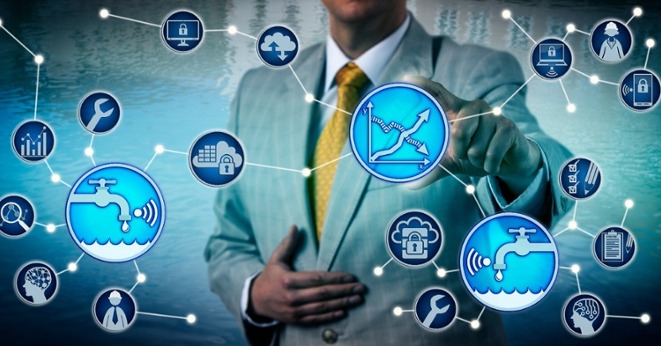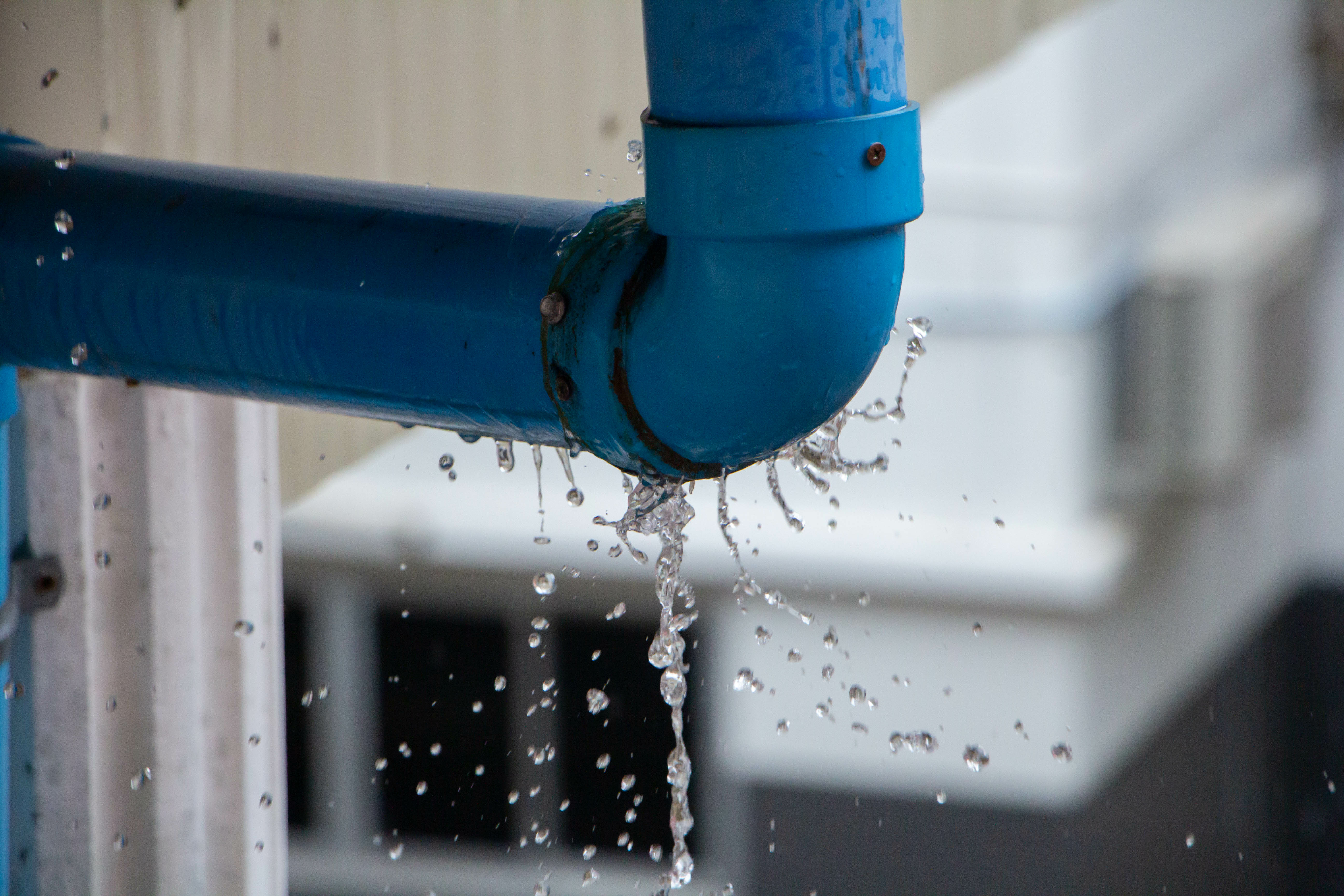 How much water has been consumed? Is there a leak or stagnation somewhere? Is maintenance necessary? No longer does this information need to be collected by technicians during scheduled on-site visits. Because unlike, traditional water meters, smart water meters communicate and transmit their data automatically, regularly – and in case of an event, immediately – to the water supplier or municipality. While various protocols are available the right choice depends on specific requirements.
How much water has been consumed? Is there a leak or stagnation somewhere? Is maintenance necessary? No longer does this information need to be collected by technicians during scheduled on-site visits. Because unlike, traditional water meters, smart water meters communicate and transmit their data automatically, regularly – and in case of an event, immediately – to the water supplier or municipality. While various protocols are available the right choice depends on specific requirements.
Communication technologies have changed drastically since the first smart meter came onto the market. It started with the one-way transmission of measurement data and turned over time into bi-directional communication between the meters and the head-end system (HES) that connects the meters with the central system. The need for improved communication performance and reliability led to the introduction of new standards and protocols. And today intelligent measurement is more than just the transmission of data between the meter and the system: It’s about integrating smart devices in utility IoT infrastructures that help build connected networks between meters and other devices and between multiple systems. While Wireless M-Bus (wM-Bus) and long-range wide-area network (LoRaWAN®) are two of the most common communication technologies used in smart meters today, there is now another technology that holds great potential for further simplifying water management: narrowband Internet of Things (NB-IoT).
Let’s take a closer look at these three technologies.
wM-Bus (wireless M-Bus)
In the past, the wM-Bus open standard protocol was the most common wireless meter-reading technology available for water meters. It was specifically designed for smart metering and was very well accepted, thanks to its standardization, quality of service, data frequency, and interoperability. Utilities used it to build their own network with full control over the features they wanted for their meter readings, independent of third parties. Because it was designed to transmit large data volumes without draining the battery, wM-Bus proved to be ideal when water suppliers or municipalities wanted meter data for billing as well as detecting leaks, fraud, and tampering, supporting predictive maintenance, and avoiding discussions about the accuracy of water consumption.
However, the wM-Bus protocol has a maximum range of 400 to 500 m, and that can decrease dramatically if conditions aren’t optimal – which is usually the case when water meters are installed in basements or underground. With the long distances involved, rural and sparsely populated areas can also pose a challenge for wM-Bus networks. Building automatic meter-reading systems with wM-Bus therefore requires quite a bit of effort: Large and costly antennas and many data collection units need to be placed throughout the entire city and supply area. Even then, it’s often impossible to reach the meters located a little outside the defined boundaries. And let’s not forget that the entire wM-Bus network also has to be maintained to ensure consistent performance and quality of service.
LoRaWAN (long-range wide-area network)
Thanks to its longer range and greater penetration, things get a lot easier with LoRaWAN® compared to wM-Bus. LoRaWAN is an LPWAN standard (low-power wide-area network), a network protocol for wireless bi-directional communication between battery-powered objects. It’s made for greater distances of two to 15 km (in the free field) and easily penetrates tough obstacles like walls, ceilings, and houses. LoRaWAN defines how data packages are automatically transmitted using LoRa® radio technology, and it meets the highest security standards with end-to-end encryption. The low energy consumption required for data transmission ensures a long battery life.
But LoRaWAN still requires infrastructure. Within the LoRaWAN network architecture – usually arranged as a star topology – the LoRa meters are connected via a single-hop connection with one or more LoRa gateways that transmit the collected meter data via a standard IP connection to a central network server or cloud. To use LoRa smart water meters, water suppliers or municipalities need to either have a LoRaWAN infrastructure already in place or implement a new one. In both cases, LoRaWAN comes with the investment and responsibilities involved in building, expanding, and maintaining the necessary infrastructure.
NB-IoT (narrowband Internet of Things)
With NB-IoT, the telecommunication industry found a solution for the growing IoT market: Smart meters with NB-IoT communication can use the existing cellular infrastructure and its antenna sites for 4G/LTE mobile communication. They can be installed anywhere out of the box from the factory – and they automatically show up on the databases. This allows water utilities to build smart meter networks without implementing their own infrastructure with expensive antennas, negotiating permissions to build base stations, and selecting gateways and other hardware. And they also don’t need to maintain the corresponding expertise and employees in their company to maintain the meter-reading infrastructure. Instead, they can concentrate on their water infrastructure and distribution network. On the other hand, because NB-IoT depends entirely on the NB-IoT infrastructure of telecommunication providers for coverage and reading performance, water utilities have to find the right telecommunication partner.
The NB-IoT technologies offer robust, cost-effective bi-directional communication with low bandwidth and enable the reliable connection of an immense number of different devices to a single network. A single NB-IoT cell can cover 50,000 NB-IoT devices in the area. Thanks to its excellent coverage, NB-IoT is suitable for remote water meter-reading, and it’s also impervious to difficult conditions like meters installed in basements and underground or in remote and rural areas. The use of unlicensed frequency bands also ensures minimal interference from other devices. When remote meter reading is this easy, a drive-by is only needed in rare cases where no public network is available.
What does all of this mean?
There’s no one-size-fits-all solution when it comes to smart water meter communication. Determining the best solution depends, among other things, on the required communication and coverage range, the number of smart meters in the field, whether it’s an urban or rural area, and whether an infrastructure is already in place, a new one has to be built, or it will be operated and maintained by a third party. Therefore, a product portfolio that covers a wide variety of communication technologies and smart water meters that can be switched from one technology to the other is extremely valuable. This allows water suppliers and municipality to make the best decision for their metering network.
With Landis+Gyr, you’ll get everything you need: smart water meters with either LoRa® and wM-Bus/OMS communication or NB-IoT (LwM2M) interfaces with integrated connectivity service to our partner network.







